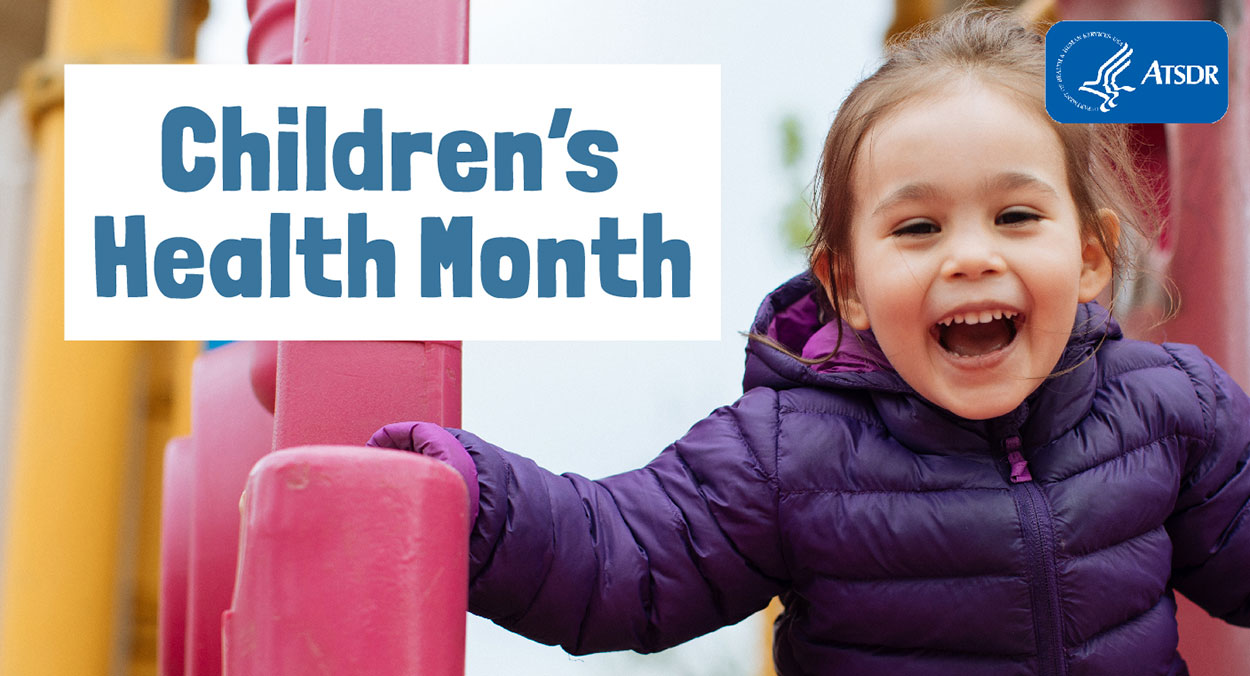Join ATSDR in observing Children’s Health Month and advancing children’s environmental health!
Posted on by
October marks the beginning of one of our favorite monthly themes: Children’s Health. This month serves as a reminder that children are vulnerable to harmful substances in the environment. Protecting children’s health from environmental hazards is one of the most important responsibilities of the Agency for Toxic Substances and Disease Registry (ATSDR).
In recognition of this month, we want to highlight our many initiatives and resources dedicated to help keep our children safe from harmful exposures and related diseases.
We encourage you to use our resources and help improve environmental health for our children.
Our agency plays a significant role in protecting children’s health through numerous public health initiatives that help keep children safe in the places where they live, learn, and play.
- There are over 500,000 brownfields and land reuse sites in the United States.
- Brownfields and Land Reuse sites are areas that may be contaminated with chemicals from past or current uses, such as abandoned chemical factories or landfills
- ATSDR is transforming communities across the nation by working with cities, towns, and neighborhoods. We help them redevelop brownfields and land reuse sites into spaces such as schools, parks, and gardens, improving public health and protecting people in communities (especially children) from dangerous substances.
- About 8.3 million children are in early care and education (ECE) centers in the United States, and nearly 1 million of them are in centers that haven’t been adequately assessed for harmful chemicals.
- Even centers that meet current state licensing regulations might be located in places where children and staff can come in contact with dangerous chemicals from the environment.
- State and local agencies can use ATSDR planning tools and resources from the Choose Safe Places for Early Care and Education program to help reduce the risk of chemical exposure in early childhood learning centers.
- Elemental (metallic) mercury is dangerous. Breathing mercury vapors can make people sick.
- ATSDR has responded to hundreds of community mercury spills, many at schools. Metallic mercury spills can be costly, disruptive, and destructive.
- Exposure to mercury, even small amounts, may cause serious health problems and is a threat to the development of children early in life. Mercury may have toxic effects on the nervous, digestive, and immune systems, and on lungs, kidneys, skin, and eyes.
- To learn more about mercury, how it can affect your health, and what to do if you find it, check out the mercury resources for school staff, students, and teachers on the Don’t Mess with Mercury website.
- A soilSHOP (soil screening, health, outreach and partnership) is a community health educational event where people can learn more about potential lead contamination in their soil and how to prevent or reduce exposures to lead in soil.
- Children under the age of 6 are most at risk because they spend a lot of time on the ground and tend to put their hands or other objects (which may be contaminated with lead dust) into their mouths.
- Children are also at greater risk because their brains and body are growing quickly. Lead can hurt the brain’s growth, hearing and speech development, and overall growth and development. Also, children exposed to lead may have a harder time paying attention and learning.
Let’s continue to use our voices and work together to protect children’s environmental health. For more information about ATSDR, visit www.atsdr.cdc.gov.


Post a Comment